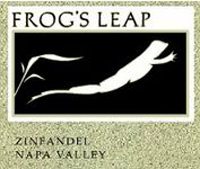

Frog's Leap
2005 Zinfandel(Napa Valley)
The farming method for this wine is old-world – a field blend of five different red grapes from organic fruit (some of which are not yet certified). What’s in the bottle too, is from another time – thankfully. This is not your typical bruiser of a Zinfandel loaded with ultra-sweet, overripe fruit exacerbated by stratospheric alcohol. So, if you like your Zins fashioned in the latter way, pass this one by. But for those of us who still appreciate a well-made, delicious, well-balanced wine, this one’s for the rest of us.
It’s alluringly pretty with black fruit and a hint of baking spices – cocoa and clove; and its round and bright. It’s the way I wish all Zins would be, but I’m tilting at broken-bladed windmills, I know. The wine, which was made in 90 percent American oak (15 percent of which was new with the rest being up to seven years old), for a year, is barely a Zinfandel, as the law has it. It’s the requisite 75 percent with rest a combination of Petite Sirah, Carignane, and Napa Gamay, the latter of which we don’t see too much of around the Napa Valley. The grapes are from several sources (Frog’s Leap doesn’t grow any Zin on its Rutherford ranch): 46% Garden, 19% Battuello, 8% Varozza, St. Helena; 11% Galleron, 6% Leeds, 3% Rossi, Rutherford; and 7% Dalraddy, Chiles Valley.
The listed alcohol is 14.2 percent and there were 9,400 cases made. Another thing: check the price. It’s well worth it. It will develop too over the next half-dozen years.
Reviewed August 10, 2007 by Alan Goldfarb.
Other reviewed wines from Frog's Leap
The Wine
Winery: Frog's Leap |
The Reviewer Alan Goldfarb
Alan Goldfarb
Alan Goldfarb has been writing about and reviewing wine for 17 years. His reviews have been published in the St. Helena Star, San Jose Mercury, San Francisco Examiner, Decanter, and Wine Enthusiast, among others. Not once has he used a point system, star system, or an iconic symbol to quantify a wine. What counts in Mr. Goldfarb’s criteria when judging a wine is: how it tastes in the glass; is it well-constructed; its food compatibility; and presence of redeeming regional attributes. |
















